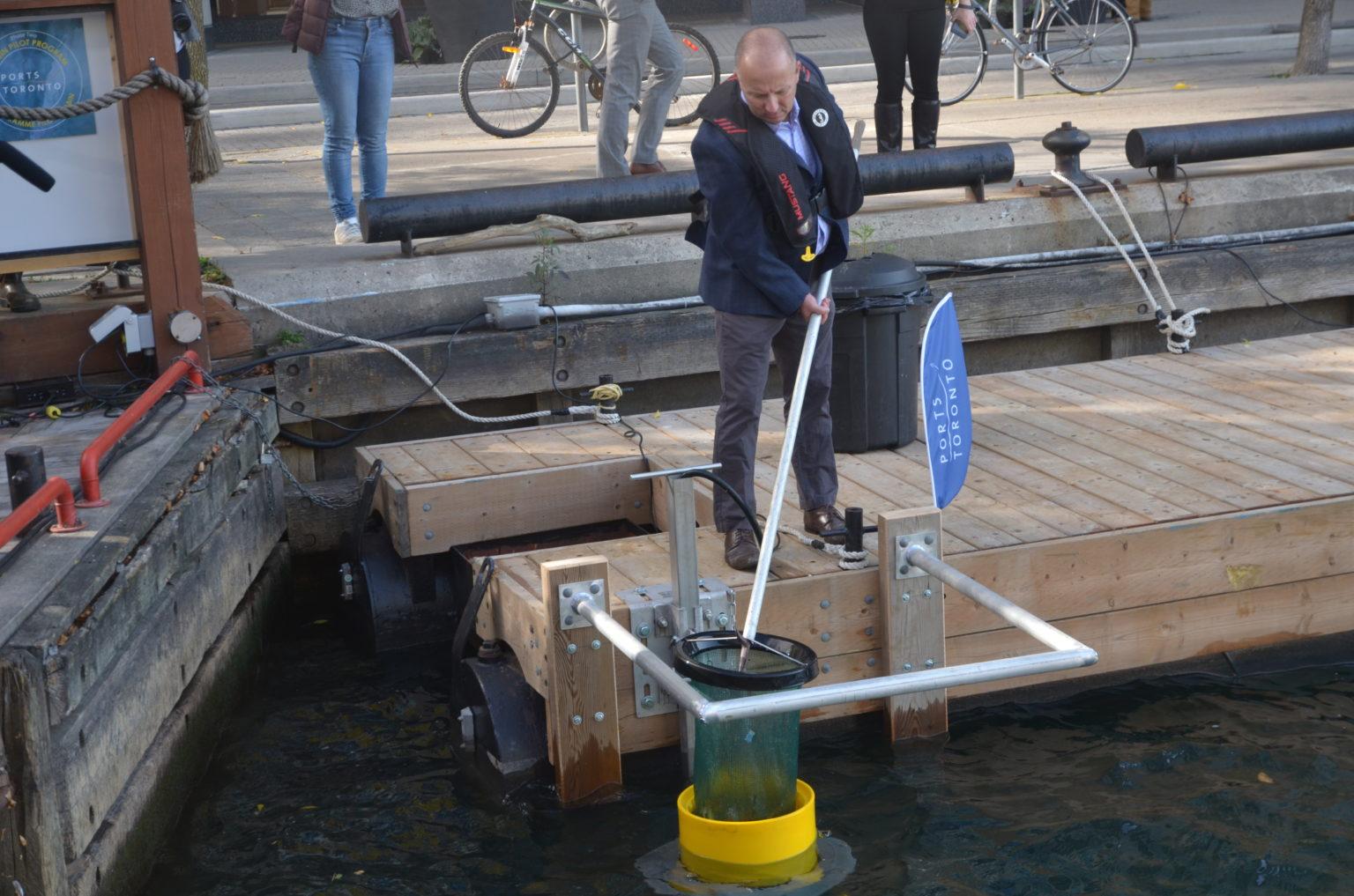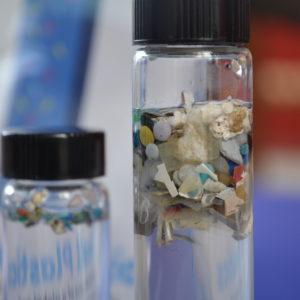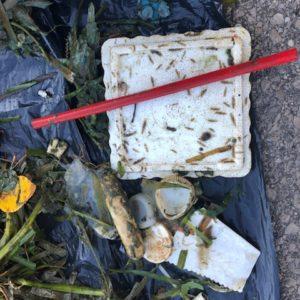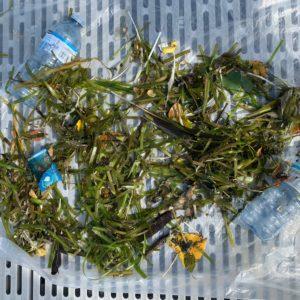
The Seabin invention is changing the way PortsToronto and Port of Hamilton are cleaning up harbours
The debris collector invented by two Australian boat builders/ water enthusiasts is changing the way PortsToronto and the Port of Hamilton are cleaning up harbour waters and improving waste literacy.
Andrew Turton and Pete Ceglinski developed the Seabin to collect trash, oil, fuel and detergents from waterways. A pump draws trash into a container attached just under the water surface to a platform or wall. The bag collects up to four kilograms of trash daily, while the absorbent but hydrophobic filter retains hydrocarbons.
“It’s simple but effective,” says Chris Sawicki, PortsToronto’s Vice President of Infrastructure, Planning and Environment. PortsToronto became the first North American port to install the recently commercialized Seabin after an employee on its volunteer sustainability committee suggested it to management. “We set up two in the Outer Harbour Marine last summer,” Sawicki says. “And later tested another two at the Inner Harbour’s York Street Slip where the winds and waves are stronger.”
PortsToronto is collaborating with a student research project at the University of Toronto called the Trash Team. The students empty the Seabins and document the waste.
“We relate the findings to community decision-makers so they can take steps to prevent the debris in the first place,” says Chelsea Rochman, the Assistant Professor of Ecology and Evolutionary Biology who co-founded the project. As expected, the Seabins retrieved disposable coffee cups, cutlery and cigarette butts.
“There’s also a lot of microplastics likely from larger pieces that have broken down over time,” Rochman says. “It’s good to get these out before they break down further and possibly enter the food chain.” Toronto’s construction boom has resulted in many rigid Styrofoam pieces from Environmental Innovation packaging and insulation.
“There’s an opportunity here to make some changes with the industry to stop this,” Sawicki says. A surprise finding has been plastic micro-pellets used to make new products. “We’re working with the industry to identify how these might be lost during shipping – perhaps falling off trucks or railcars,” Rochman says. “The industry is also looking at putting traps on storm drains.”



The industry is collaborating with the students to develop and present a webinar across Canada to make companies aware of the issue and solutions. Improving waste literacy is a key goal. PortsToronto has posted Seabin signs. “We’re hoping people realize the effect of putting something in already overflowing bins or just plain littering,” Sawicki says.
Meanwhile, the Trash Team is visiting classrooms. Gautier Peers, who is in charge of business development for Water Products & Solutions (Seabin’s official supplier), applauds the approach. “Youth are the best influencers,” he says. “The Seabins can also show politicians where there’s a problem.”
As of February 1, more than 850 Seabins were in use worldwide. They range between $7,800 and $10,000, depending on the installation required. “They’re always near the surface to avoid interfering with marine life,” Peers explains. “In areas with regular tides or other fluctuations, they must be installed so their level can be adjusted.”
The Port of Hamilton acquired its first Seabin last fall. It collected water bottles, plastic wrappers/bags, cigarette butts, bait containers and other trash during a month-long trial.
“We’ll have a full season ahead to track waste,” confirms Emily Paivalainen, the Communications and Community Relations Coordinator for HOPA Ports (Hamilton Oshawa Port Authority). “We’re also in talks with partners willing to fundraise to purchase additional Seabins.”
PortsToronto plans to acquire 30 to 40 Seabins over the next two years. It’s also encouraging purchases by municipalities, community organizations, business associations as well as private marinas for other waterfront areas. “We’re hoping a solar-powered model will be available soon to lower costs in locations away from power sources,” Sawicki adds.